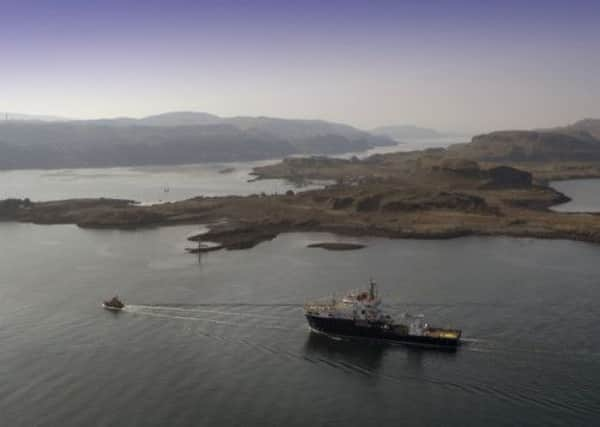Exotic reef creatures thrive off Scotland’s coast


Their successful recovery has prompted calls from conservationists for better protection for the marine environment.
New underwater surveys by the Marine Conservation Society show a marked increase in biodiversity around reefs in the Firth of Lorn, near Oban, since a scallop-dredging ban was introduced there in 2007.
Advertisement
Hide AdAdvertisement
Hide AdDivers from volunteer group Seasearch recorded a dramatic rise in populations of the spectacularly coloured jewel anemone and northern sea fan found during the five-day survey, as well as smaller increases in the numbers of other marine species. Seasearch national co-ordinator Chris Wood said: “We were able to compare the current range of life at Jeannie’s Reef, near the uninhabited island of Eilean Dubh Mor, with video from 2003, when dredging was still taking place nearby.
“Since the ban, there have been dramatic increases in two species – jewel anemones, which are now abundant though small, and northern sea fans, of which there are a large number of small colonies.
“Sea fans are slow-growing colonial corals which can only thrive in undisturbed locations and take many years to reach their full size. Jewel anemones are most often found in clear waters and on offshore reefs. The team also recorded a wide range of other species in increased numbers, including cluster anemones and sponges.”
Jewel anemones get their name from their vivid colouration, and the main part of their bodies can be green, white, orange, blue, pink or red. They reproduce by splitting.
The northern sea fan is a rare horny coral, usually white or gray, that stands about 10cm tall.
Rare bottom-dwelling marine species are susceptible to human disturbances such as damage and removal by heavy fishing gear, said Lawrance Ferns, marine policy and advocacy officer for Scottish Environment LINK.
He said: “This type of activity has the most profound impact to marine habitats and their resident species known across the world. The activity can even influence a change in the types of species that favour more disturbed environments, as they have life history strategies to rapidly recolonise and then outcompete the normal residents. It can then take many decades for a normal balance to establish.”
The news was not all good, however. Researchers failed to find any evidence of the rare burrowing anemone Arachnanthus sarsi at two sites it had previously colonised near Eilean Dubh Beag in the 1980s, bringing calls for action on establishing Marine Protected Areas (MPAs).
Advertisement
Hide AdAdvertisement
Hide AdMr Ferns said: “It is plausible that regular scallop dredging activity in the Firth of Lorn prior to the six-year ban historically resulted in a local extinction of Arachnanthus sarsi, even though the ban has subsequently allowed the return and establishment of other species.
“This is why it is important to establish MPAs now where we still have rare and unique species, and ensure we establish MPAs of adequate size and as part of an ecologically coherent network so they have a chance to survive for future generations.
The Scottish Government is currently consulting on proposals for the establishment of 33 new MPAs, ranging from spectacular coral gardens and sponge reefs to sheltered sea lochs with fireworks anemones and two-metre tall sea pens.